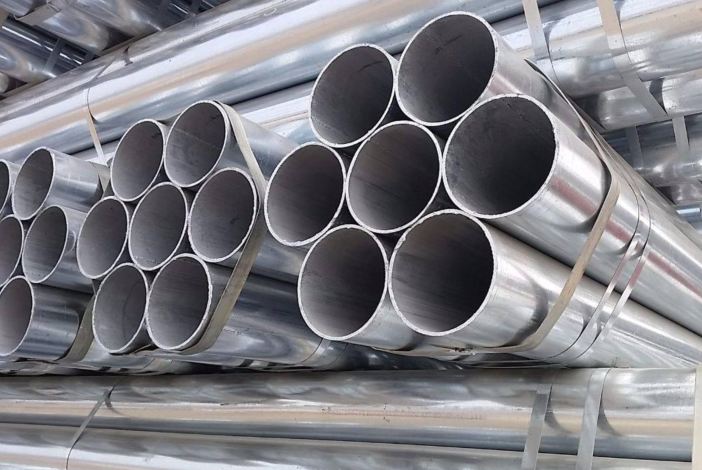
ADTO News
Hot-dip Galvanized Steel Pipe vs Cold-dip Galvanized Steel Pipe
Hot-dip galvanized steel pipe: The hot-dip galvanized steel pipe is first pickled on the steel parts. In order to remove the iron oxide on the surface of the steel parts, after the pickling, it is passed through ammonium chloride or zinc chloride aqueous solution of ammonium chloride and zinc chloride The mixed aqueous solution tank is cleaned and then sent to the hot-dip plating tank. Hot-dip galvanizing has the advantages of uniform coating, strong adhesion, and long service life.
Cold-dip galvanized steel pipe: Although cold galvanized steel pipe is rarely used on a large scale now since we are talking about the difference, it will naturally be introduced. Cold galvanizing is also called electro-galvanizing, which uses electrolytic equipment to remove oil After pickling, put it in a solution of zinc salt and connect it to the negative electrode of the electrolysis device. Place a zinc plate on the opposite side of the pipe fitting, connect it to the positive electrode of the electrolysis device and turn on the power supply. Use the current to move from the positive electrode to the negative electrode. A layer of zinc is deposited on the pipe fittings, and the cold-plated pipe fittings are processed first and then galvanized.
Hot-dip galvanized steel pipe vs cold-dip galvanized steel pipe:
1. Different manufacturing processes
Hot-dip galvanized steel pipe is to make the molten metal react with the iron matrix to produce an alloy layer so that the matrix and the coating are combined.
A cold-galvanized steel pipe is a cold-galvanized coating that is mainly used for anti-corrosion through electrochemical principles.
2. Different equipment required
Hot-dip galvanized steel pipe: pickling equipment, bottom-drawing annealing furnace, or bell-type annealing furnace.
Cold galvanized steel pipe: electrolysis equipment.
3. Different performance
Hot-dip galvanizing: long-lasting and anti-corrosion, the standard quality of hot-dip galvanizing anti-rust thickness makes it have excellent durability; the toughness of the coating is strong, and the hot-dip galvanizing layer forms a unique smelted metal structure. The structure can withstand mechanical damage during transportation and use.
Cold galvanizing: has excellent environmental performance. Most cold galvanizing solvents and thinners do not contain highly toxic organic solvents, and the cold galvanizing process also reduces the volatilization of organic solvents, reduces drying energy consumption, and is beneficial to environmental protection.
4. The thickness of the galvanized layer is different
The zinc layer of hot-dip galvanized steel pipe is relatively thick, with a thickness of more than 10um. Although the surface is bright, it is rough and spangles will appear.
The zinc layer of electro-galvanized (cold galvanized steel pipe) is very thin. As long as the thickness is 3-5um, although the surface is smooth, it will appear dark and dirty, with good processing performance and insufficient corrosion resistance.
5. Different applications
Hot-dip galvanized steel pipes are widely used in electric power towers, communication towers, railways, highway protection, street lamp poles, marine components, building steel structural components, substation ancillary facilities, light industry, etc. due to their good anti-corrosion properties.
Cold-galvanized steel pipe is the main development direction of the environmental protection of heavy anti-corrosion coatings.
ADTOMall is a leading manufacturer and distributor of carbon seamless steel pipe(seamless line pipe/seamless boiler tube/seamless galvanized pipe/hydraulic steel tube), welded steel pipe, OCTG products, and fittings. We supply first-step processing, semi-finished parts, and finished parts to help our clients meet fabrication requirements beyond their capacity or to improve operations by moving forward with the pre-production processing.


 Live Chat
Live Chat

